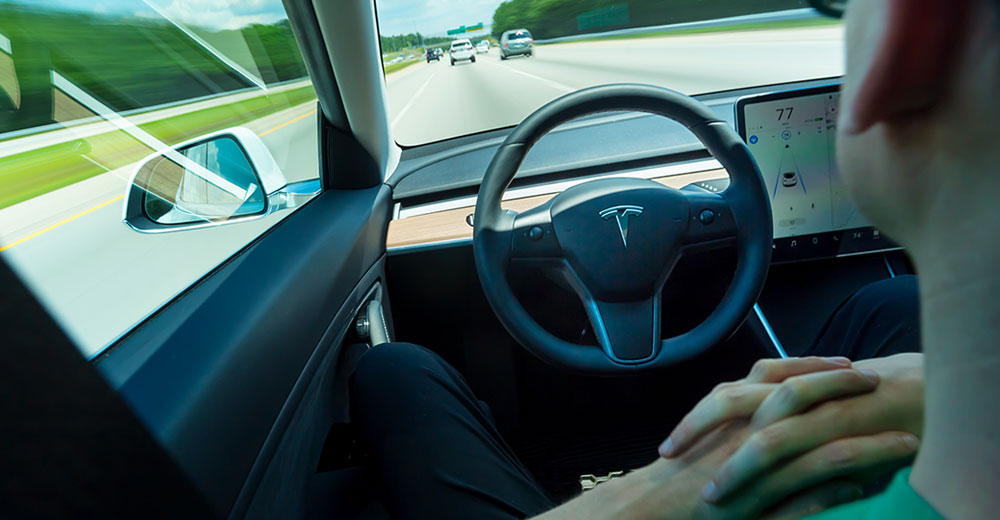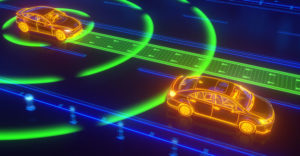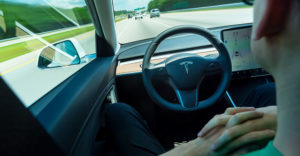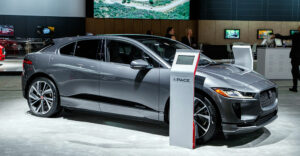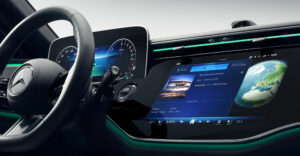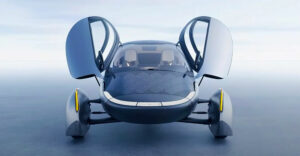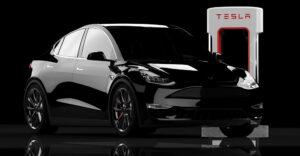Many operators of semi-automated motor vehicles drive as if their autos are fully automated, despite the crash risks of doing so, according to a study released Tuesday by the Insurance Institute for Highway Safety (IIHS).
The study, based on a survey of 600 users of Cadillac’s Super Cruise system, Nissan/Infiniti’s ProPilot system, and Tesla’s Autopilot system, found the drivers were more likely to perform non-driving activities, like eating or texting, while using the driver assistance systems.
On top of that, more than half the Super Cruise drivers (52%), two out of five Autopilot drivers (42%), and 12% of ProPilot drivers told surveyors they were comfortable treating their vehicles as full self-driving autos.
“The big-picture message here is that the early adopters of these systems still have a poor understanding of the technology’s limits,” IIHS President David Harkey said in a statement.
“It’s possible that system design and marketing are adding to these misconceptions,” he added.
Understanding Gap
The IIHS isn’t alone in finding gaps in consumer understanding of the capabilities of driver-assistance technology. Studies by J.D. Power, a consumer research, data, and analytics firm based in Troy, Mich., have yielded similar results.
“We found 56% of consumers classifying driver-assisted technology available today as fully-automated self-driving,” said JDP’s Senior Manager of Auto Benchmarking and Mobility Development, Lisa Boor.
“That’s concerning because we know that those systems today are meant to assist the driver,” she told TechNewsWorld. “The driver still has overall responsibility for the vehicle.”
The IIHS explained that current partial automation systems assist drivers through adaptive cruise control — which can regulate speed to maintain a safe distance behind a vehicle — and lane centering, which keeps a vehicle centered in its travel lane.
It noted that the existing systems are not designed to replace human drivers or make it safe for them to perform other tasks that take their focus from the road. Track tests and real-world crashes have provided ample evidence that the systems struggle to recognize and react to common driving situations and road features, it added.
Marketing Hype
Marketing may be a factor contributing to consumer misunderstanding about the capabilities of computer-assisted driving systems.
“Tesla, because of the way they’ve marketed Autopilot over the years and Elon Musk has talked about Autopilot, has created the impression that these types of systems are far more capable than they really are,” said Sam Abuelsamid, principal analyst for e-mobility at Guidehouse Insights, a market intelligence company in Detroit.
“Because Musk is put forward by a lot of people in the media as a genius, people are inclined to believe him, even though a lot of what he says is nonsense,” he told TechNewsWorld.
Gartner Vice President and Analyst for Automotive and Smart Mobility Mike Ramsey agreed that marketing has played a role in consumer expectations about driver assistance systems. “Tesla names its system Autopilot, which implies the vehicle will fly itself,” he told TechNewsWorld.
“It’s implied that the vehicle is driving itself,” he added. “It’s not really driving itself. It’s essentially cruise control with extra functionality.”
Some Supervision Required
The way these systems are designed, they don’t put firm boundaries on driver behavior, so drivers don’t know what they can and cannot do, observed IIHS research scientist and report author Alexandra Mueller.
“That adds to the confusion,” she told TechNewsWorld. “These systems seem highly capable — and they are — but their capabilities aren’t a replacement for a driver. That message seems to get lost.”
“These systems are not self-driving,” she said. “They frequently encounter conditions that require driver intervention.”
Mueller maintained the idea that drivers always have to be ready to intervene and be prepared to supervise these systems isn’t something that humans are very good at doing. “We’re not very good at maintaining the alertness to supervise and monitor what these technologies are doing constantly,” she said.
“The more capable these systems are, the more difficult it is to supervise them because the driver isn’t physically involved in the operation of the vehicle anymore,” she continued.
“It’s natural that people would want to do other things to stay alert, but doing anything but driving means the driver is no longer involved in driving the vehicle.”
Distracted Drivers
If there’s one thing humans are not good at, it’s supervising automation, Abuelsamid contended. “Anytime something is working most of the time, humans will get complacent,” he said.
“It’s hard to remain mentally engaged in a task you’re not physically engaged in,” he continued. “By allowing the driver to go hands-free, you’re reducing some of the traditional driver workloads, but you’re creating new cognitive workloads for the brain.”
“No one has figured out how to address that,” he maintained. “It may be that anything less than full automation may not be a good idea.”
Driver-assisting systems can be an invitation for distracted driving. “If you tell consumers they can take their hands off the steering wheel and their foot off the pedals and the vehicle will operate itself, you’re inviting them to not pay attention,” Ramsey observed.
On the other hand, he pointed out that even without these systems, distracted drivers are everywhere. “People are already driving distracted by their phones, so these technologies have become necessary to prevent accidents,” he said. “The systems are accommodating distractions that are already there.”
Better Communication Needed
Boor maintained that the auto industry needs a better way to communicate with consumers about the capabilities of driver-assistance systems. “We can’t continue to rely on the dealer or the owner’s manual,” she said.
“No one part of the automotive industry can do this alone,” she continued. “The automakers play a critical part in that, but as a whole, consumers aren’t differentiating between these levels of automation.”
“It’s critical for the industry as a whole to provide multiple learning opportunities to close that gap,” she added.
Abuelsamid advocates adding active driver monitoring systems to ensure drivers are attentive to road conditions while a driver-assistance system is activated.
“Knowing what the limitations of a system are and putting in place systems to minimize the potential for customer misuse is really critical,” he warned.

